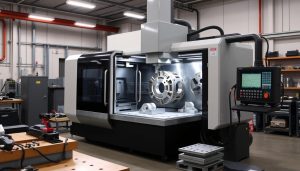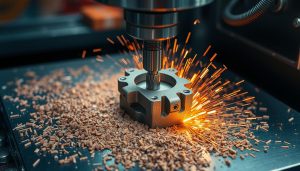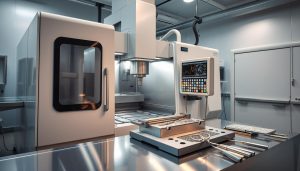Heat sinks are key in keeping electronic devices cool. They help devices stay within a safe temperature range. This is important for keeping devices working well and lasting longer.
Heat sinks work by absorbing and spreading out heat. This helps manage the heat that devices produce when they work.
Keeping devices cool is critical to avoid overheating. Overheating can cause devices to work poorly, get damaged, or even stop working altogether. Heat sinks are essential for keeping devices running smoothly and lasting longer.
Understanding What is the Purpose of a Heat Sink
Heat sinks are key to keeping electronic devices cool. They stop overheating and help devices work well. Cooling systems are vital for devices like CPUs and GPUs to function without overheating.
The science of cooling is based on conduction, convection, and radiation. Heat sinks spread out to touch more air, helping to cool down. This is critical for devices, as heat can cause damage or failure.
Basic Definition of Heat Sinks
A heat sink absorbs and releases heat from electronic devices. Its main job is to let heat out, keeping devices cool and working right.
The Science Behind Heat Dissipation
Heat dissipation happens through conduction, convection, and radiation. Conduction is direct heat transfer between objects. Convection uses fluid movement to transfer heat. Radiation sends out heat as electromagnetic waves.
Role in Electronic Devices
In devices like computers and phones, heat sinks cool down important parts. They prevent overheating and damage, ensuring devices work well. This is why heat sinks are essential in many electronic devices.
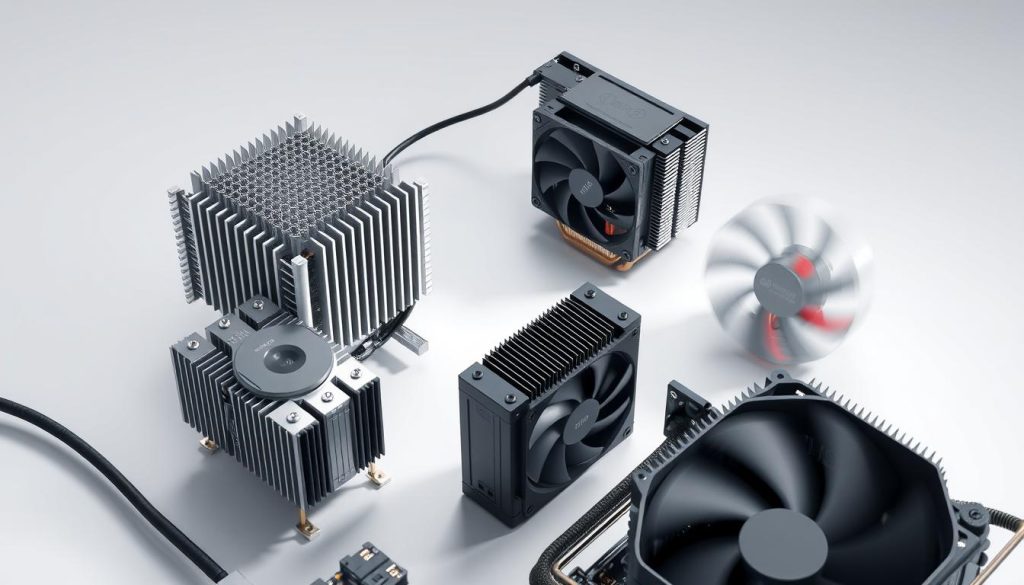
- Improved performance and reliability
- Increased lifespan of components
- Reduced risk of overheating and damage
- Enhanced overall system efficiency
Knowing about heat sinks helps make better cooling systems. It shows how important cooling is for our devices.
Core Components and Design Features of Heat Sinks
In heat sink design, several key components are vital. Materials like copper, aluminum, and graphite are chosen for their ability to conduct heat well. This helps them absorb and spread heat effectively.
A good heat sink needs a large surface area for better heat transfer. Fins help increase this area, allowing for more air to flow. The size and shape of the heat sink also matter, with bigger ones cooling better.
Important aspects of heat sink design include:
- Material selection: choosing materials with high thermal conductivity
- Surface area: maximizing surface area to increase heat transfer
- Fin design: optimizing fin shape and size for improved air circulation
- Thermal interfaces: using thermal interfaces to enhance heat transfer between the heat sink and the device
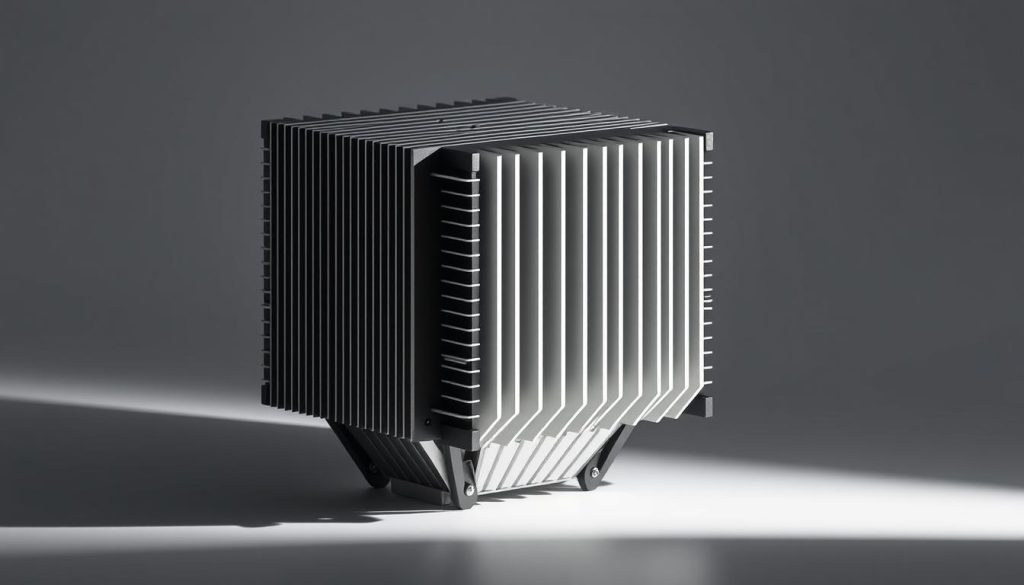
The structure of the heat sink is also key. It should have a strong base and durable fins for reliable use. By focusing on these details, engineers can design effective heat sink design solutions for various needs.
| Material | Thermal Conductivity | Common Applications |
|---|---|---|
| Copper | 386 W/m-K | High-performance electronics, heat exchangers |
| Aluminum | 237 W/m-K | Consumer electronics, automotive applications |
| Graphite | 100-200 W/m-K | Thermal interfaces, high-temperature applications |
Types of Heat Sinks and Their Applications
Heat sinks are key in many electronic devices. They come in different types, each with its own cooling method and use. It’s important to know about these types and how they are used.
The main types include passive, active, liquid-cooled, and heat pipe systems. Each has its own strengths and is suited for specific uses. For example, passive heat sinks use natural air flow, while active ones use fans for better cooling.
Heat Sink Technologies
- Passive heat sinks: used in low-power devices, such as smartphones and laptops
- Active heat sinks: used in high-power devices, such as gaming computers and servers
- Liquid-cooled heat sinks: used in demanding applications, such as data centers and supercomputers
- Heat pipe systems: used in high-performance applications, such as aerospace and automotive
Knowing about the different heat sinks and their uses is key. It helps in choosing the right cooling method for a device or system. This knowledge helps designers and engineers make better, more reliable electronics.
| Heat Sink Type | Application | Advantages |
|---|---|---|
| Passive | Low-power devices | Low cost, simple design |
| Active | High-power devices | High cooling performance, flexible design |
| Liquid-cooled | Demanding applications | High efficiency, high cooling capacity |
| Heat pipe systems | High-performance applications | High reliability, low maintenance |
Benefits of Proper Heat Sink Implementation
Using heat sinks correctly is key for keeping electronic devices running well and lasting longer. They help get rid of heat, which stops devices from overheating. This prevents damage and keeps devices working as they should, improving device performance and energy efficiency.
There are many benefits to using heat sinks right:
- Extended device lifespan: Heat sinks stop overheating, which means less chance of parts failing and devices lasting longer.
- Improved performance stability: They keep devices running smoothly, reducing errors and crashes.
- Energy efficiency advantages: Heat sinks help devices use less power, saving energy and money, and helping the environment.
In summary, using heat sinks correctly is vital for devices to work well and use less energy. It greatly improves device performance and energy efficiency.
Conclusion: The Essential Role of Heat Sinks in Modern Technology
Heat sinks are key to keeping electronic devices running smoothly. They range from simple designs in everyday gadgets to complex systems in high-tech computers. These solutions are vital for keeping devices stable and lasting longer.
As devices get more powerful, they need better ways to cool down. New designs and materials in heat sinks are on the horizon. This could lead to even more efficient devices, protecting them from overheating damage. The future of heat sink technology looks bright, opening doors for innovation in many fields.


